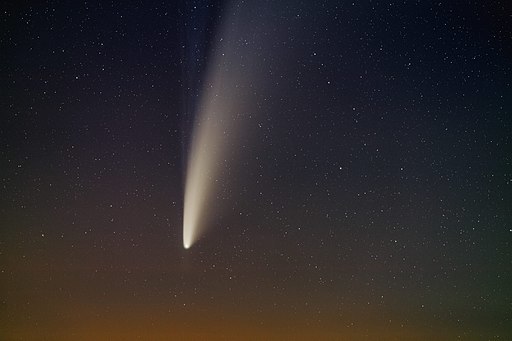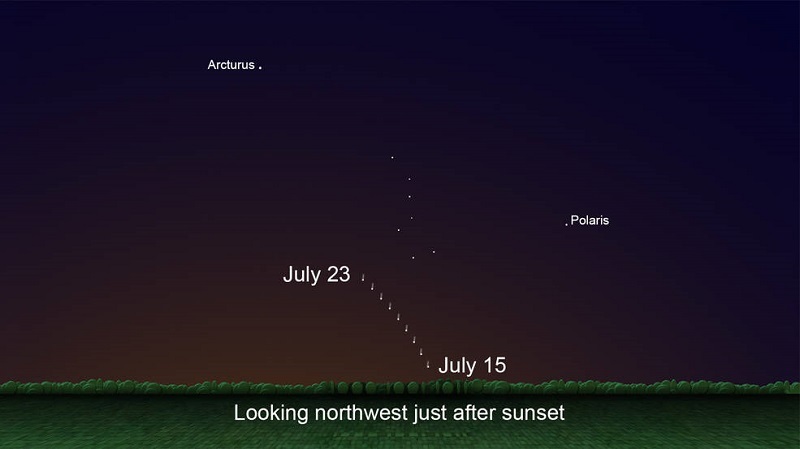
Comet NEOWISE
Posted on July 17, 2020
Photo: Maxime Storn / CC BY-SA
This summer, lots of things we look forward to for entertainment have been canceled... baseball, Fourth of July Fireworks, concerts... but right now, the natural world is putting on a pretty cool show for you, free of charge, every night. Yes, if you haven't heard, there’s a comet to look at! Comet NEOWISE, to be exact, the brightest comet to streak across the sky in 23 years.
NEOWISE is named for the mission that discovered it back in March (Near-Earth Object Wide-field Infrared Survey Explorer... yeah, we'll stick to NEOWISE, we think), and it is due to make its closest pass by Earth on July 22. It is bright enough that it can be seen with the naked eye, though a telescope or even just regular binoculars will help you see it better. Up until this past week, it could only be seen just before dawn, but now for those of us who like to sleep in a little, it's visible in the evening after sunset too! And now's the time to go see it. By late July, it will no longer be visible to the naked eye, and it's not expected to make another appearance for 6,800 years!
What is a comet, anyways? It's a big ball of frozen gases, rock and dust leftover from the formation of the solar system that orbits the sun. As it get closer to the sun, it heats up and spews dust and gases, forming a big, glowing head that can be as big as a planet, and trailing a tail that can extend millions of miles. According to NASA, NEOWISE is one of 3,650 known comets currently zipping around the sun.
Here's how to see it: On a clear night (like tonight!) find some unobstructed sky away from light pollution. Just after sunset, look below the Big Dipper in the northwest sky. If you are looking without the aid of a telescope or binoculars, it will look like a fuzzy star with a little bit of a tail behind it. Each night, it will appear a little higher over the horizon, as shown in this graphic created by NASA:

And here's a cool website that lets you plug in your location, and will tell you specifically where and when you'll be able to see it.
So get outside in the next couple of nights, and check it out before it's gone!






















